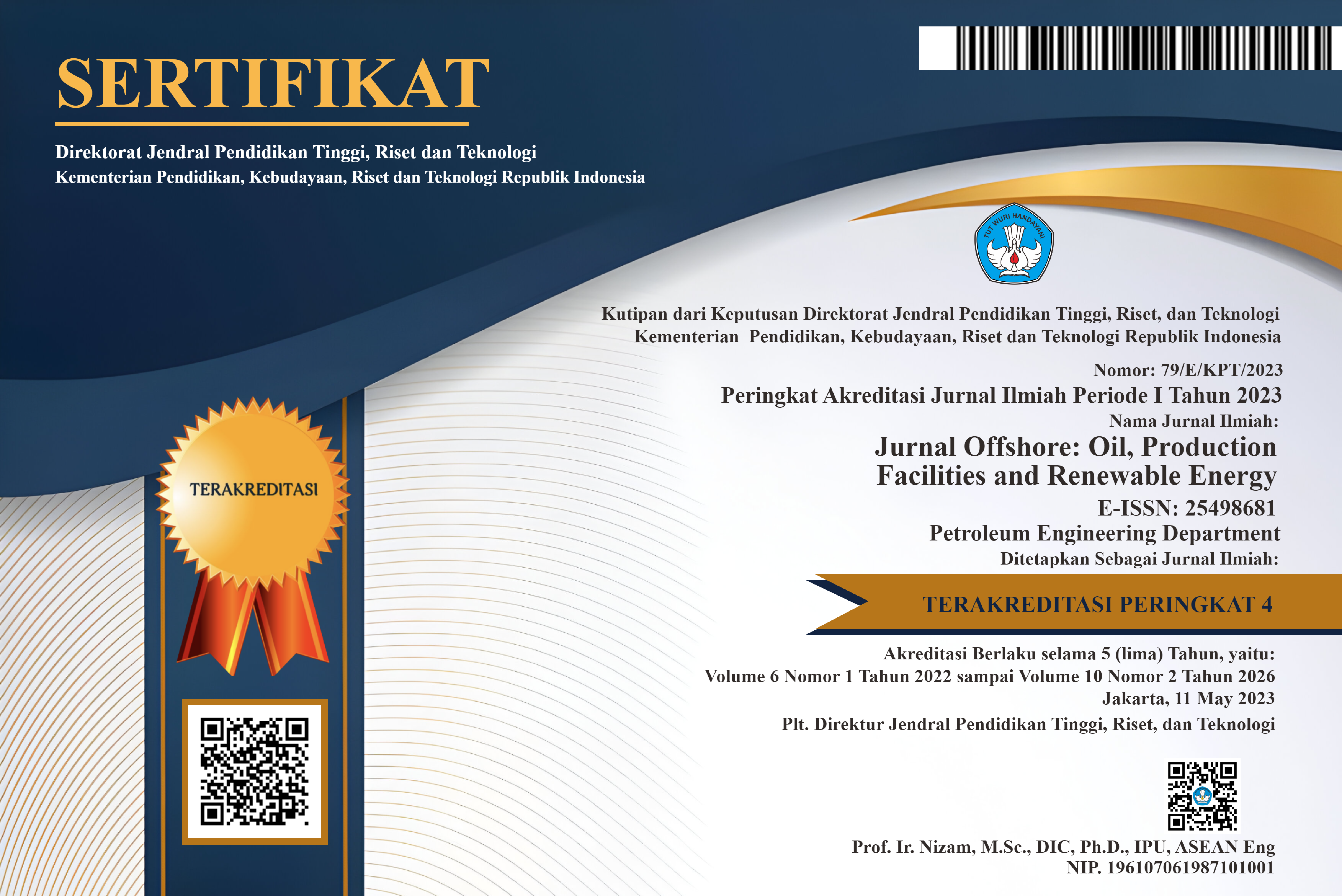Proses Pirolisis Untuk Mengkonversi Limbah Plastik Menjadi Bahan Bakar Minyak Menggunakan Penyaringan Adsorban (Arang dan Zeolit)
DOI:
https://doi.org/10.30588/jo.v5i2.993Keywords:
Pirolisis, plastik LDPE, zeolite, arang.Abstract
sebuah teknologi dekomposisi bahan organic pada suhu tinggi tanpa adanya oksigen. Tujuan dari penelitian ini adalah untuk mengetahui proses konversi sampah plastic menjadi bahan bakar minyak yang optimal dan memahami pengaruh penggunaan absorban arang dan zeolite sebagai media proses pemurnian minyak pirolisis. Percobaan ini menggunakan reactor dengan ketebalan 2 mm, diameter 60 cm dan ketinggian 55 cm. Proses pirolisis terjadi pada suhu 100-3500C menggunakan plastic LDPE sebanyak 40 kg/proses. Lebih lanjut, pemurnian hasil minyak pirolisis dengan variasi adsorban arang dan zeolite dengan pengujianr nilai kalor, viskositas, dan titik nyala di dalam laboratorium. Hasil pengujian menunjukkan bahwa variasi penggunaan absorben arang dan zeolite berpengaruh terhadap parameter pengujian minyak pirolisis tersebut. Nilai kalor terbesar adalah 9576.9713 cal/gr menggunakang absorban 100% arang, sedangkan viskositas terendah sebesar 47.5 cP menggunakan 100% zeolit, serta titik nyala tertinggi adalah 137 °C menggunakan 100% zeolit.
AbstractPyrolysis is a technological tool to process the thermal decomposition of organic materials at high temperatures in the absence of oxygen. The purpose of this study was to determine the conversion process of plastic waste in order to produce optimal fuel oil and to understand the significance of charcoal and zeolite adsorbents as a medium for the purification of pyrolysis oil. The study used a reactor with a thickness of 2 mm, with a diameter of 60 and a height of 55 cm. This pyrolysis process is carried out at a temperature of 100-3500C using LDPE plastic fuel of 40 Kg/process. Furthermore, purification of the pyrolysis oil using a variation of charcoal and zeolite adsorbants with parameters of calorific value, viscosity, and flashpoint results through laboratory tests. The results showed that the variation of the adsorbant structure of charcoal and zeolite stone as a medium for purification of pyrolysis oil products greatly affected the calorific value, viscosity, and flashpoint results. The highest average calorific value (9576.9713 cal/gr) using 100% wood charcoal, the highest average viscosity value (47.5 cP) using 100% zeolite, and the highest average flashpoint value (137 °C) using 100% zeolite.
Downloads
Published
How to Cite
Issue
Section
License
Authors retain copyright and grant the Jurnal Offshore right of first publication with the work simultaneously licensed under a Creative Commons Attribution 4.0 International License that allows others to share (copy and redistribute the material in any medium or format) and adapt (remix, transform, and build upon the material) the work for any purpose, even commercially with an acknowledgement of the work's authorship and initial publication in Jurnal Offshore. Authors are able to enter into separate, additional contractual arrangements for the non-exclusive distribution of the journal's published version of the work (e.g., post it to an institutional repository or publish it in a book), with an acknowledgement of its initial publication in Jurnal Offshore. Authors are permitted and encouraged to post their work online (e.g., in institutional repositories or on their website) prior to and during the submission process, as it can lead to productive exchanges, as well as earlier and greater citation of published work (See The Effect of Open Access).















